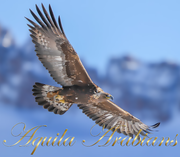Aquila Offline
Premium Premium Visit My Farm
Visit My Farm
Joined: Thu Feb 13, 2025 4:54 pm Posts: 114
Visit My Farm
Visit My Farm
Joined: Thu Feb 13, 2025 4:54 pm Posts: 114
Premium Premium
 Visit My Farm
Visit My Farm
Joined: Thu Feb 13, 2025 4:54 pm Posts: 114
Visit My Farm
Visit My Farm
Joined: Thu Feb 13, 2025 4:54 pm Posts: 114 Re: Fat horses - don't know what to do!
Thanks for your excellent explanation!BlackOak2 wrote: ↑Wed Feb 19, 2025 7:11 pmAC horses having red is neither good nor bad. It's just what we see. You can assume that almost all the AC horses have hidden genes that could pop up as red, but didn't. It's up to us to decide which horses are worth it or not. Because what you see as an AC horse with red, we may actually be seeing the lowest that horse has, to pass onward. The resulting foals may never show red at all.Aquila wrote: ↑Wed Feb 19, 2025 4:37 pm
My horses are all moderately thin now; I got there there with the adult horses by feeding them 99% of their energy requirements, and then feeding them 100% of their energy requirements thereafter.I'll keep your dieting arrangements in mind in future
I do have room for an extra horse, or I might have to sell my mare and filly, as they have red in the breeder's comments, and I understand one probably shouldn't keep horses like that.
In my experience, it takes about three generations to breed out all of the worst negative stat genes. So for those first three generations, you may see a sprinkling of reds until they're gone.
But it comes down to the breeder and what their plans are. If you have no problems using other peoples' lined horses than go for that. But if you want to create your very own line from scratch, then aim for that instead.
But I have worked with a long line of AC horses and have determined that red in an AC horse is far less important than their overall HGP. And even with HGP, that can be a problem to work with. As long as your AC horses are HGP 31k and upward, then they're as good to start with as any other, red or not. It comes down to what foals they throw. If all of your foals result in HGP's below their parents (the same gender or both together, dependent on how close the HGP of both parents are), then those parents have many more negative genes than average. And as such, will either additional work (and an unknown number of generations more), or they should be culled for other stock.
As such, the only really difficult AC horse breed to work with is shetlands which regularly offer AC stock below 30k HGP (as much as I've seen). Other than that AC breed, I've had a little difficulty with caspians, they tend to grow slowly, which might mean they have as much bad as good; NAB's can be difficult but can also be easy; Forests can be super easy or relatively difficult and I've never been too big a fan with working with Turks. I haven't had much luck with them, but others have.
Arabians are neither difficult or easy. As long as you have a good and appropriate culling program, they'll move along at a steady rate.
Personally, I like crossing arabs and belgians. They make a great mix and a strong base for future disciplines. For some reason it's an excellent combination that progresses seemingly at a faster pace than any other, purebreed or cross. From AC stock.

